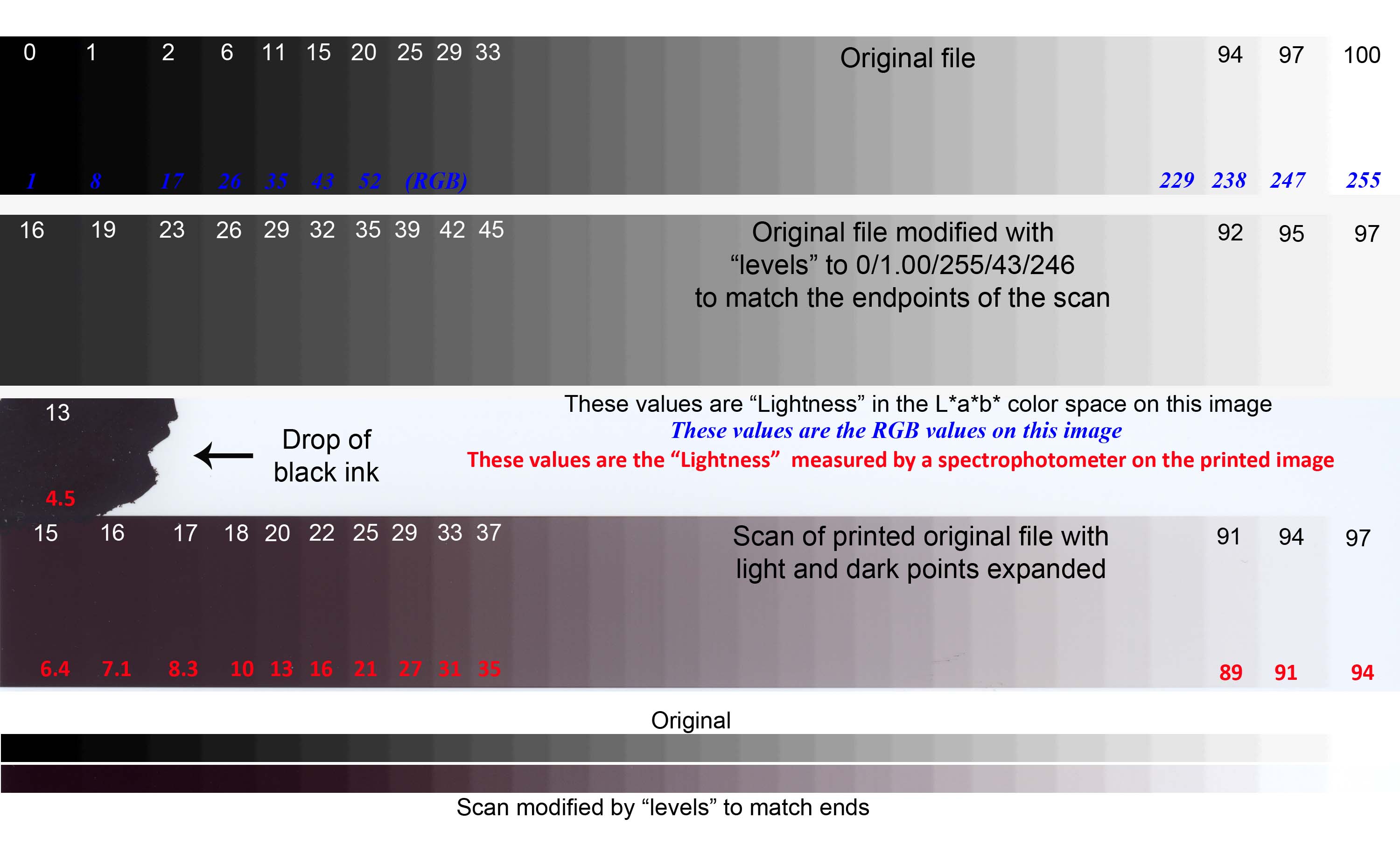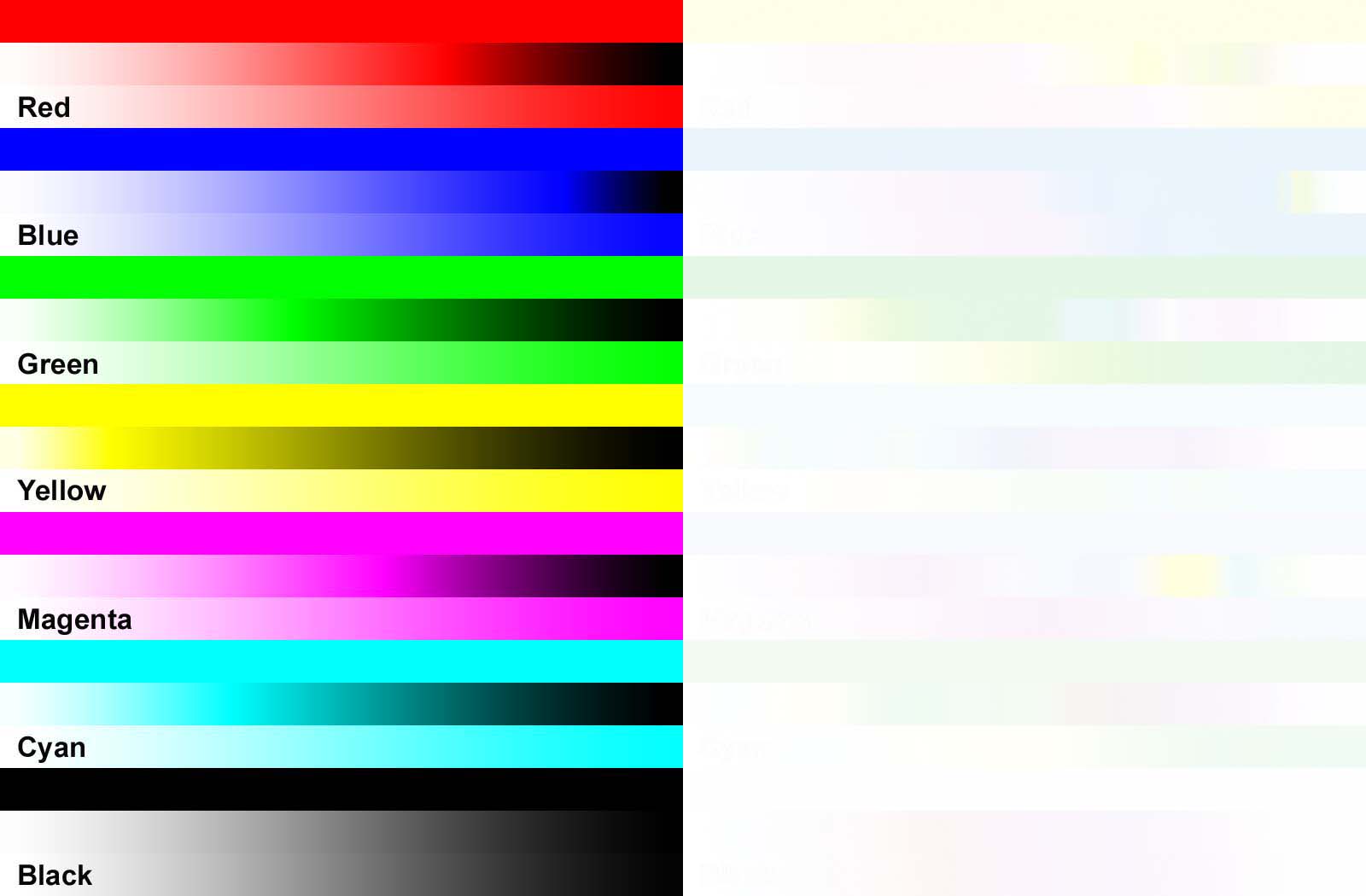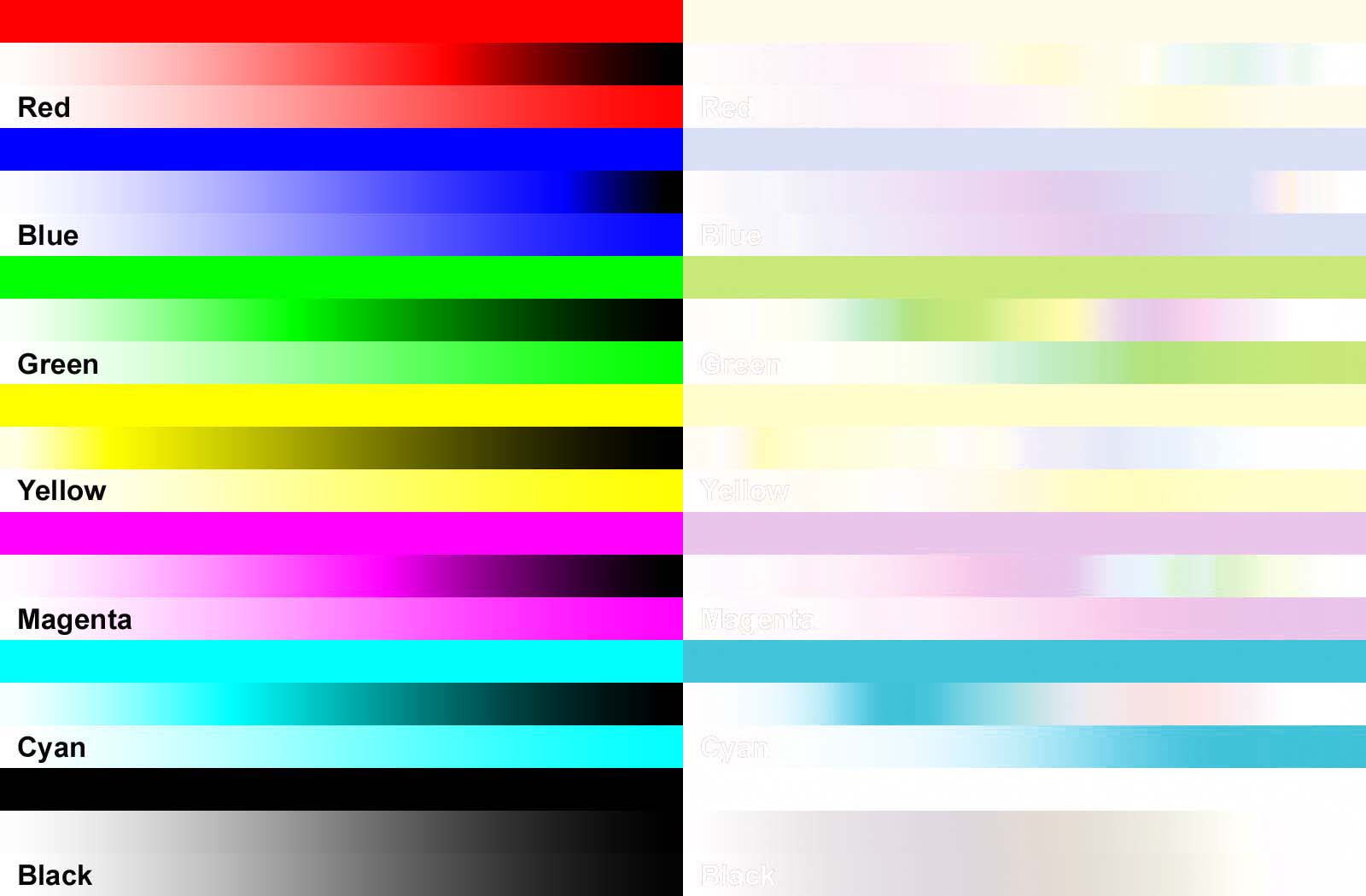Has anyone seriously compared the Made in Mexico vs the Made in USA Kirkland Pro Glossy photopaper?
How close are they, any measurements made?
How close are they, any measurements made?
I generated a B&W posterized gradient, printed it and left let it dry overnight by eye, it looks close to the image on the monitor. It was then scanned with the scanner driver settings selected to prevent clipping (a true black will appear as a very dark gray and a true white will appear as a very light gray). The scan data was not processed through any profile it is the raw data from the scanner. The top bar on the following image (in the aRGB color space) is the raw data that was printed (without the notes) using my existing profile for the USA Kirkland paper. The black and white numbers are the Lightness in the L*a*b* color space, and give a good idea of how light each tone appears, while the blue numbers are the R/G/B values (same value for R/G/B to give gray) used to generate each gray tone. Note that the Lightness changes slowly on the darkest tones, even though the R/G/B values change uniformly across the entire gradient.mikling said:Have you ever noticed the compression on the blacks on this paper? On the USA version I have noted this and when I show others on their own prints with their own printers, they suddenly see what was going on. This confirms that my batch of USA version or my printers was not creating this effect.
Review some photos, look at the shadow areas and check the transitiion to black or darker shades, You will notice a sudden dropoff to black that is not within the image. Once you see it, you will begin to notice it. So review at your own peril. Even on simple paper such as Epson Glossy, this is not there. It just seems like this paper (intentionally or unintentionally) creates this effect.

The problem with using a printer without pigment gray&black inks is that the various colors used to make up the gray tones dont fade at the same rate, and even if you initially hit neutral gray the print will develop a color cast when fading occurs. When I want B&W, I print at Costco on their chemical process.mikling said:Hey Grandad35, do everything in B&W! Then you'll be a real grandad! and the colors won't matter!


That would have also been a good test, but (like you) I don't have any more of the old paper. It would be easy to print the profiling targets on both papers and to scan them with the same (all corrections turned off) scanner settings. Unfortunately, I don't save old targets or the resultant data files from the spectrophotometer.mikling said:Would the test have been more valid if the raw values from the printer was used somehow and not the resultant profile.